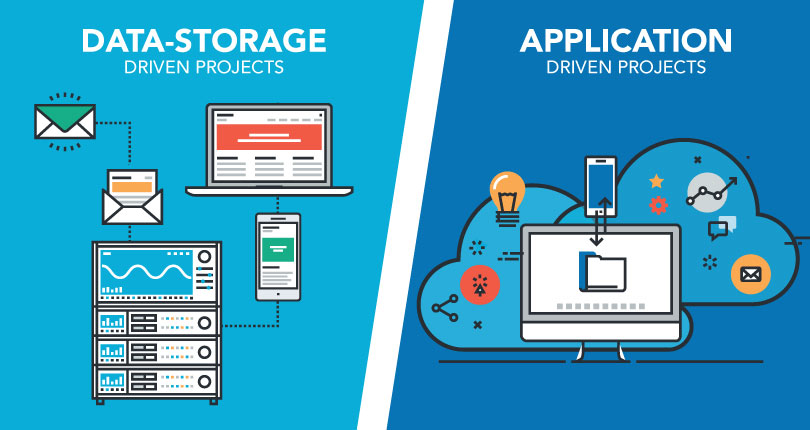Big data has become a big industry. The lofty promise of big data analytics to deliver actionable insights and create competitive advantage is being realized. And organizations that once dismissed the idea of implementing a big data strategy are giving it a second look as they consider the benefits of capturing, managing, and analyzing mountains of potentially rich customer data.
In weighing the risks and benefits of big data implementation, the main question for IT and business executives centers on what the value of a big data initiative will look like in their organizations. Will ROI come from cheaper big data storage or from new insights brought to light by big data applications?
The answer to that question lies in whether the big data project is data-storage driven or application-driven, and what follows is a brief look at each.
Data-Storage Driven Projects
The amount of business data being generated is growing exponentially, and the cost to capture and store massive volumes of data in traditional data warehouses is growing right along with it. This has created a critical need for organizations to find a more cost-effective way to store their information. In answer to that problem, in-house Hadoop has emerged as an affordable big data storage solution for businesses.
For organizations running corporate internal applications in a private data center now faced with large volumes of structured and unstructured data, an in-house Hadoop infrastructure is well suited to what would primarily be data-storage driven projects, especially for organizations where broad accessibility and frequent use are not necessary.
As for ROI, the Hadoop Distributed File System (HDFS) can create a relatively high-performance scale of storage with commodity servers at a fraction of the cost of a traditional data warehouse. It should also be pointed out that the storage, management, and internal analysis of big data via on-premise Hadoop ensures a high degree of data security and protection.
Application Driven Projects
Collecting lakes of data is one thing, but finding the business value hidden in heaps of structured and unstructured data is quite another. And it takes more than an on-premise Hadoop functionality to get the job done. That’s where big data apps and Big Data-as-a-Service (BDaaS) providers enter the picture. By offering Hadoop and additional tools in the cloud, BDaaS vendors eliminate the need for companies to invest heavily in hardware, installation, and setup, and IT teams to manage on-site Hadoop clusters. In fact, many applications are “plug and play” and can be up and running very quickly.
When relevant information is delivered into the hands of the right users, insights that spark change and drive decisions can more readily come about.
Big data apps are designed with the business user in mind. Typically they are simple to use and easy to navigate and they give organizations complete internal control of their data. Unlike on-premise Hadoop solutions where big data analysis for insights is left up to data scientists, big data applications put analysis and insight discovery into the hands of business users—the people who understand the company’s core business strategies and objectives. Thanks to the ease of data accessibility that apps provide through a user-friendly interface, execs and analysts on both the tech and business sides can work together to solve real business problems across the enterprise, making sure that the big data strategy always serves the strategies and objectives of the business.
Among the many benefits of cloud-based big data applications that can drive ROI, faster time to value stands at the top of the list. And faster time to value means a shorter time to insight. The fundamental problem with conventional relational database solutions—which are extremely reliable at managing and analyzing massive data sets for insights— is that those insights, typically delivered over days or even weeks, are often “stale” on arrival. In today’s fast-paced world, businesses need to be quick and agile.
Data is no longer neat and structured, it’s mostly unstructured and chaotic, and it’s streaming in at unprecedented volumes, varieties, and velocities. Cloud-based applications running on top of powerful Hadoop processing engines such as Apache Spark offer real-time data analysis, handling both batch and streaming workloads at lightning-fast speeds. In addition, cloud applications such as visualization software can deliver data insights in an easily digestible form, made readily available to multiple users via smartphones and other mobile devices.
In-house Hadoop and data storage-driven projects aren’t going away anytime soon. But it’s clear that real competitive advantage and ROI will come to those companies that can make real-time decisions and act immediately on insights gleaned from fresh and reliable data to improve business outcomes. And that’s what today’s big data applications are all about.



